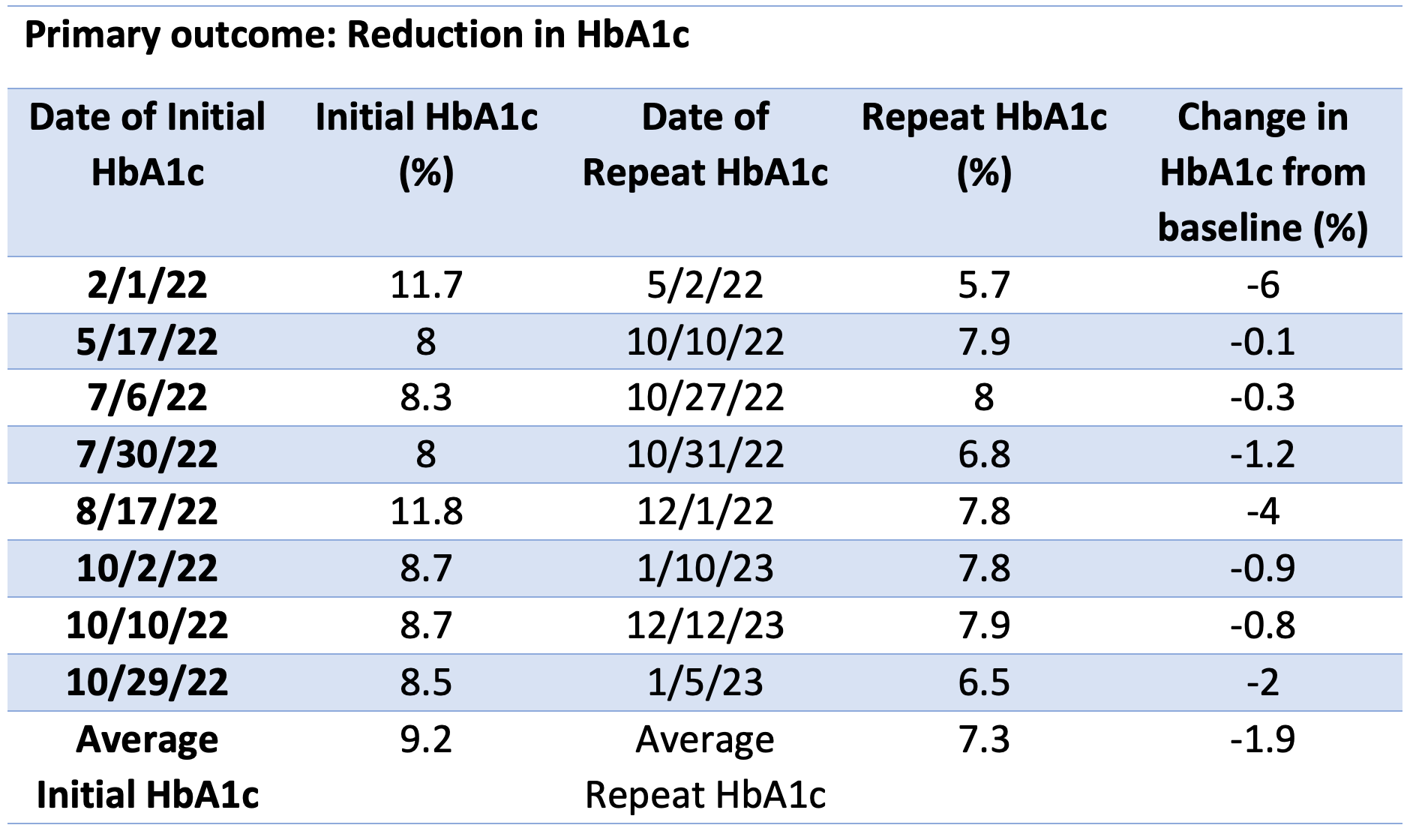Article
Pharmacist-led Post-Cardiovascular Surgery Outpatient Glycemic Management
Pharmacist-led post-cardiovascular surgery outpatient glycemic management services help reduce hospital readmissions and sternal wound infections in patients with uncontrolled diabetes who recently underwent an interventional cardiology procedure.
Every year, approximately 427,000 patients in the United States undergo coronary artery bypass graft surgery (CABG). Roughly 14% of these patients will present to the emergency department (ED) within 30 days of discharge with post-operative complications.1,2 Patients who lack primary care follow-up appointments have been shown to have worse long-term outcomes.2
Image credit: Siarhei - stock.adobe.com

A retrospective study showed 30-day readmission rates of 15%–20% in patients older than 80 years of age undergoing cardiac surgery at a single center.3 Furthermore, a lack of outpatient primary care practitioner visits within 30 days after discharge was associated with a 5-fold increased risk of poor 1-year functional survival (hazard ratio 5.18, p < 0.01).3 These findings highlight the important role that primary care practitioners and proper outpatient management play in the care of patients following CABG surgery.
There are a variety of post-cardiac surgery complications, and although no single diagnosis accounts for the majority of ED visits and readmissions, the 3 most common diagnoses include post-operative infection, congestive heart failure, and chest discomfort. Post-operative infection is a general term encompassing superficial site infections, pneumonia, urinary tract infections, and sternal wound infections (SWIs), which include mediastinitis, pericarditis, and myocarditis.
SWIs are relatively uncommon events, occurring in about 1%–2% of all patients undergoing cardiac surgery. However, SWIs pose a serious risk to the post-CABG surgery patient, with up to a 30% mortality rate, which is much higher than the estimated mortality rate of 2% for all cardiac surgery patients. SWIs confer an approximate 2.5-fold increase in long-term mortality, even in successfully treated patients who survive for at least 6 months postoperatively.4,5
Sternal wound infections are among the potential complications post cardiac surgery. Despite refined surgical techniques, such as smaller incisions, antibiotic therapy, and optimized glycemic control, the incidence rate fluctuates between <1% in elective cases with low risk factors and as high as 25% in patients with extensive risk factors.6 Currently established risk factors for SWIs include obesity, the requirement of immunosuppressive agents, and uncontrolled diabetes.
Diabetes is a well-recognized independent risk factor for mortality due to coronary artery disease.7 When diabetic patients need cardiac surgery, either coronary artery bypass grafts or valve operations (VO), the presence of diabetes represents an additional risk factor for these major surgical procedures.7
There is also a clear association between uncontrolled diabetes and an increased risk of sternal wound infections, which puts this patient population at an increased risk of re-admission.A study by Zerr and colleagues included 8910 patients who underwent cardiac operations between 1987 and 1993.8
A total of 1585 (18%) of these patients were diabetic and, with optimal diabetic control, the rate of deep wound infection was reduced from 2.4% to 1.5%.8 It can be challenging to control diabetes with established care; however, in patients who lack a primary care provider or endocrinologist, the risk is even higher in those with no follow-up appointments.
The purpose of the pharmacist-led post-cardiovascular surgery outpatient glycemic management service is to help reduce hospital readmissions and sternal wound infections in patients with uncontrolled diabetes who recently underwent an interventional cardiology procedure. The primary focus involves improvement in A1c through outpatient glycemic control.
The target population includes adult patients (>18 years of age) who recently had an interventional cardiology procedure performed by a collaborating provider. Patients must also have a diagnosis of diabetes mellitus with an A1c >8% prior to hospital discharge. Procedures that are eligible for enrollment involve CABGs, aortic or mitral valve replacements, transcatheter aortic valve replacements, aortic valve (AV)/tricuspid valve (TV)/mitral valve (MV) repairs, and anomalous arteries. The most common procedure seen are CABGs.
Before the initial visit, a pharmacist conducted an in-depth chart review including the date and type of cardiac surgery performed, the patient’s past medical history, duration of diabetes, current medications, allergies, and relevant labs among many other pertinent factors. The pharmacist determined glycemic goals based on guideline-directed medical therapy and evaluated risk-benefit analysis based on patient age, comorbidities, previously trialed medications, health literacy, lifestyle, and affordability.
Patients had the option to either come in person or conduct a telehealth visit with the pharmacist. During the visit, the pharmacist performed a full medication reconciliation, updated current allergies with the associated reactions, verified the duration of diabetes, inquired about previously trialed medications and reasoning for discontinuation, and assessed medication adherence.
One of the most common reasons for uncontrolled diabetes is non-adherence, such as missing doses or incorrect administration. The pharmacist would review blood glucose (BG) logs with the patient and documented pertinent BGs in a progress note with average, minimum, and maximum readings.
An in-depth discussion about lifestyle including diet, physical activity, alcohol/tobacco/illicit drug use was conducted which was followed with extensive patient education. The patient was counseled on proper diet and planning healthy meals, medications use/dosage/administration/adverse effects, the importance of self-monitoring blood glucose (SMBG), glycemic goals and when to check BG, and proper hypoglycemia management. The patient was counseled to record BG readings in a logbook to take to upcoming visits with providers.
At the end of the visit, the patient was provided with a plan and a follow-up appointment was scheduled. Per the collaborative practice agreement in place with the cardiothoracic surgeons, pharmacists were able to provide prescriptions for diabetes medications and diabetic medical equipment, which could be electronically prescribed or called in to the patient’s pharmacy.
If any new prescriptions were initiated, the patient followed-up in 2-4 weeks. If no significant changes were made, then a 4-6 week follow-up was scheduled to reinforce or provide new education. Patients were followed for 90 days post discharge.
From January 2022 to November 2022, 242 patients were screened for eligibility for this research project. Forty-eight patients met eligibility criteria and were contacted for enrollment. Seventeen patients were successfully enrolled and met with a pharmacist at least once for an outpatient glycemic management visit. Nine patients were lost to follow-up and eight patients completed the 90-day follow-up period and received a follow-up A1c. Patient follow-up was completed in February 2023.
Primary Outcome
By February 2023, 100% (n=8) of patients with a repeat HbA1c had an overall reduction in HbA1c with an average reduction of 1.9%. All patients who were enrolled were required to have a pre-procedure A1c of >8% and all patients at the end of 90 days had A1c readings of <8%.
Secondary Outcomes
None of the patients were readmitted within 30 days or developed sternal wound infections.

Overall, pharmacist-led glycemic management of post-cardiac surgery patients 90 days post-discharge decreased A1c levels in patients and may have prevented readmissions and sternal wound infections. Only 8 patients were included due to limitations with enrollment of patients, adherence to appointments, and compliance with obtaining an A1c upon completion of the program.
However, all patients experienced a decrease in HbA1c who successfully completed the program. Based on these results, further research in this area could provide valuable data regarding decreased readmission rates and post-surgical infections if larger sample sizes can be obtained. Moving forward, strategies to increase compliance, such as face-to-face interaction, more frequent follow-up calls, extensive patient education, and flexible scheduling, are some of the interventions that can be made to further improve this research project.
References
- De Waard D, Fagan A, Minnaar C, Horne D. Management of patients after coronary artery bypass grafting surgery: a guide for primary care practitioners. CMAJ. 2021;193(19):E689-E694. doi:10.1503/cmaj.191108
- Montrief T, Koyfman A, Long B. Coronary artery bypass graft surgery complications: A review for emergency clinicians. Am J Emerg Med. 2018;36(12):2289-2297. doi:10.1016/j.ajem.2018.09.014
- Arora RC, Manji RA, Singal RK, Hiebert B, Menkis AH. Outcomes of octogenarians discharged from the hospital after prolonged intensive care unit length of stay after cardiac surgery. J Thorac Cardiovasc Surg. 2017;154(5):1668-1678.e2. doi:10.1016/j.jtcvs.2017.04.083
- Filsoufi F, Castillo JG, Rahmanian PB, et al. Epidemiology of deep sternal wound infection in cardiac surgery. J Cardiothorac Vasc Anesth. 2009;23(4):488-494. doi:10.1053/j.jvca.2009.02.007
- Mauermann WJ, Sampathkumar P, Thompson RL. Sternal wound infections. Best Pract Res Clin Anaesthesiol. 2008;22(3):423-436. doi:10.1016/j.bpa.2008.04.003
- Sharif M, Wong CHM, Harky A. Sternal Wound Infections, Risk Factors and Management - How Far Are We? A Literature Review. Heart Lung Circ. 2019;28(6):835-843. doi:10.1016/j.hlc.2019.01.008
- Morricone L, Ranucci M, Denti S, et al. Diabetes and complications after cardiac surgery: comparison with a non-diabetic population. Acta Diabetol. 1999;36(1-2):77-84. doi:10.1007/s005920050149
- Zerr KJ, Furnary AP, Grunkemeier GL, Bookin S, Kanhere V, Starr A. Glucose control lowers the risk of wound infection in diabetics after open heart operations. Ann Thorac Surg. 1997;63(2):356-361. doi:10.1016/s0003-4975(96)01044-2
Newsletter
Stay informed on drug updates, treatment guidelines, and pharmacy practice trends—subscribe to Pharmacy Times for weekly clinical insights.






